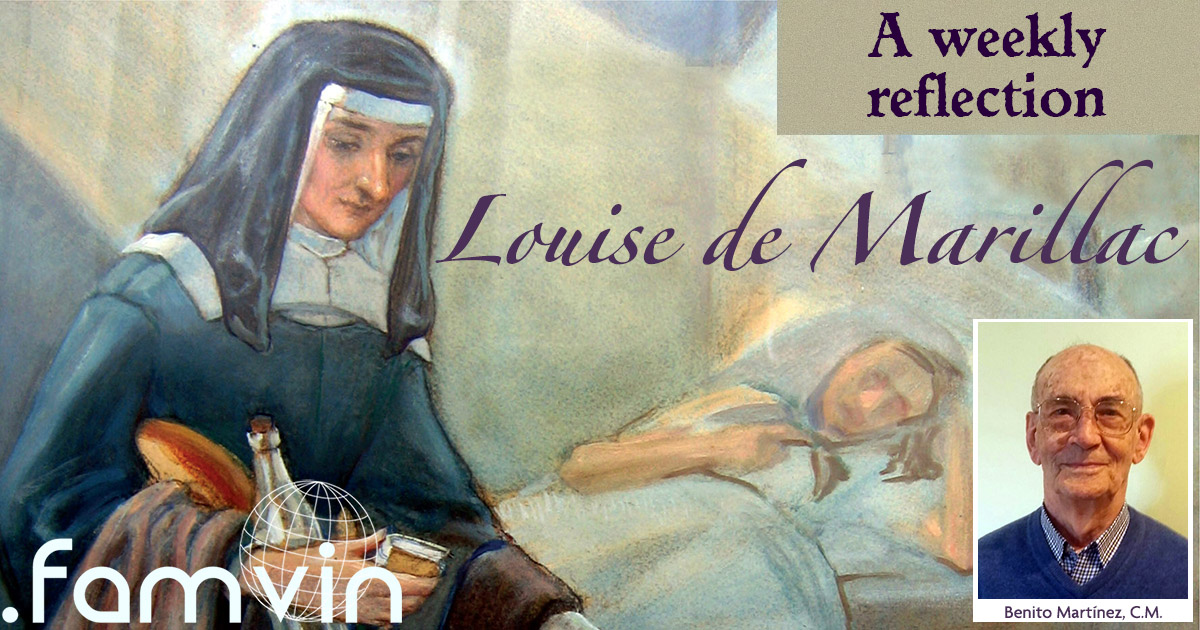“You invite me to go to the Crib so that I can meet you there near the Infant Jesus and His Holy Mother. From the way you speak, I gather that you visit it lovingly so that you may be united to all our sisters. I, however, visit it seldom because I stop only on my way back from holy Mass. Let me tell you that, this year, the Crib is in a little grotto at the feet of Jesus Crucified. It is in a large alcove so it seems to be a better representation of Bethlehem than we have had other years. You will learn from Jesus, my dear Sisters, to practice solid virtue, as He did in His holy humanity, as soon as He came down upon earth. It is from the example of Jesus in His infancy that you will obtain all that you need to become true Christians and perfect Daughters of Charity. You will do so by entreating Him to grant you His Spirit as He did at your holy Baptism.”
Louise de Marillac, letter to the Daughters of Charity at Chantilly, December 28, 1659 (L.647).
Reflection:
- The first Christmas in which a nativity scene was set up was on the Christmas Eve of 1223. It was set up by St. Francis of Assisi in a cave in Italy. The nocturn mass was celebrated accompanied by a representation of the birth, by means of a manger (without child) with the ox and the mule. After the Mass was celebrated by the priest, St Francis preached on the birth of Christ, son of God, in circumstances as humble as those of that moment: on a cold winter night, inside a cave , where the animals —that warmed the Child with his breath— ate. Little by little the nativity scenes became popular in the churches during Christmas time, with figures of terracotta, wax or wood. From the fourteenth century on, assembling nativity scenes for Christmas was common in Europe. In 1465, the first manufacturer company of nativity figures was founded in Paris.
- The knowledge of things begins with the impressions communicated by our senses, and seeing an image is important in order to arrive to the knowledge of a truth of faith. Since 8th century, iconoclastic movements have appeared in history that discard and destroy the images, considering idolatry to venerate images of wood or metal. Even today some Protestant branches or Islamic movements do. However, the Catholic Church encourages their devotion because, for many people, in addition to culture, they bring us to God; and whenever we are in contact with God, we are praying. A Nativity scene can be a simple support to talk to God.
- St. Louise adds a sympathetic reason: when visiting the nativity scenes, all the Vincentians are united, as in an “advent crown,” by the same faith, waiting for the same graces of the Child born, bound by the mutual brother love and impelled by the same charism of service to the poor. Today we add: and united Christians, Muslims and pagans, believers and unbelievers, because we all are the same humanity to which God belongs since that first Christmas.
Questions for dialogue:
- Do you put a manger/crib in your house? Do you visit the manger/cribs built in the churches? Do you encourage your fellow Vincentians, your relatives and friends to visit nativity scenes? Are you ashamed to do it?
- How do you think you can build a manger/crib in your heart? And how can we help build it in the Vincentians’ meetings? Can you make your family a manger/crib? And your town or city?
Benito Martínez, C.M.








0 Comments